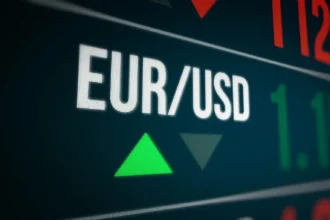Citi Raises Gold Price Target to $3,200: A Comprehensive Look at the Bullish Outlook for 2025
In a recent note, Citigroup (Citi) has raised its three-month gold price target to $3,200 per ounce, up from a previous estimate of $3,000. This bold move highlights Citi’s optimism about the future of gold prices, driven by a combination of strong central bank demand, geopolitical uncertainty, and increasing investment flows. The bank’s decision to revise its gold price target has captured the attention of investors, analysts, and market participants alike, as it suggests a continued upward trajectory for the precious metal in the coming months.
In this blog post, we’ll explore why Citi has made this significant adjustment to its gold price forecast, the macroeconomic factors supporting the price surge, and what investors should expect as we move into 2025. By understanding these dynamics, you can better navigate the gold market and position your portfolio accordingly.
Understanding Citi’s Gold Price Forecast
Citigroup has raised its three-month gold price target to $3,200 per ounce, marking a notable shift from its prior estimate of $3,000. This adjustment comes in response to several key factors that Citi believes will continue to drive gold prices higher in the near future.
1. Central Bank Demand: A Major Driver of Gold Prices
One of the most significant factors cited by Citi is the ongoing and increasing demand for gold from central banks, particularly China. Central banks have been net buyers of gold for several years, and their purchases have surged recently due to concerns over economic instability, inflation, and geopolitical tensions. This has created strong support for gold prices, pushing them to new highs.
In Citi’s view, central banks—especially those in emerging markets—are using gold as a hedge against risks like currency devaluation, inflation, and geopolitical uncertainty. China, in particular, has been increasing its gold reserves to diversify its foreign exchange holdings away from the U.S. dollar. As central banks continue to bolster their gold reserves, this increased demand will likely continue to put upward pressure on prices.
2. Geopolitical Uncertainty and Investment Flows
Geopolitical uncertainty remains another critical factor driving gold prices higher. Ongoing tensions in the Middle East, Europe, and other regions have created an environment of risk aversion, prompting investors to seek safe-haven assets like gold. The precious metal has long been viewed as a store of value in times of geopolitical turmoil, and as conflicts and uncertainty persist, gold continues to attract investment flows.
Furthermore, as the global economy faces headwinds from trade wars, tariffs, and other political risks, many investors are turning to gold as a hedge against downside risks. Citi highlights that gold has rallied by 50% over the past year, reaching over $3,000 per ounce, as investors seek protection from risks related to global growth and asset market instability.
3. Strong Demand for Hedges Against Economic Risks
The growing demand for gold as a hedge against economic risks is another crucial factor contributing to Citi’s bullish outlook on the precious metal. The ongoing trade disputes, particularly between the U.S. and China, have raised concerns about the potential impact of tariffs on global growth. Investors are increasingly worried about the possibility of a U.S. economic slowdown or stagflation, which could further boost demand for gold as a safe-haven asset.
In Citi’s view, gold’s ability to serve as a store of value amid economic uncertainty is one of the key reasons why it remains a popular investment choice. As investors look for ways to protect their portfolios from potential market volatility and economic shocks, demand for gold is expected to remain strong.
Citi’s Price Target Breakdown: Bullish and Bearish Scenarios
While Citi has raised its three-month gold price target to $3,200, the bank also provides insights into two possible scenarios for gold prices in the months ahead: a bullish (best-case) scenario and a bearish (worst-case) scenario.
Bullish Case: $3,500 Gold by Year-End
In Citi’s bull-case scenario, where the U.S. economy experiences a hard landing or stagflation, the bank sees gold prices potentially reaching $3,500 per ounce by the end of 2025. This scenario, with a 30% probability, assumes that economic conditions in the U.S. deteriorate significantly, leading to much higher hedging and investment demand for gold.
Under this scenario, investors would likely seek to protect their wealth from the effects of economic stagnation and inflation, further boosting demand for gold. A U.S. economic downturn could push gold prices even higher, as market participants flock to the metal as a safe haven in the face of a weakening dollar and rising inflation expectations.
Bearish Case: $2,500 to $2,600 Gold
Even in a bearish scenario, where the U.S. economy remains resilient, Citi expects gold prices to hold above $2,500 per ounce. This scenario is based on the continued strength of central bank and retail buying, which Citi believes will provide a solid floor for gold prices, even if broader economic conditions improve.
In the bearish case, the market may see less demand for gold as a hedge against economic and geopolitical risks, but central banks and retail investors are likely to continue purchasing the metal as a store of value. As a result, Citi’s outlook suggests that gold prices will not dip significantly below the $2,500 per ounce level, even in the face of economic stability.
Longer-Term Gold Outlook: $3,000 and Beyond
Looking beyond the short-term price targets, Citi maintains a long-term outlook for gold that suggests the precious metal will remain above $3,000 per ounce in 2025. This forecast is supported by Citi’s expectation that investment demand will continue to make up a significant portion of global gold demand, with over 90% of mine supply being absorbed by investors.
As global economic uncertainty persists, central banks are likely to remain major buyers of gold, ensuring continued strong demand for the precious metal. Additionally, retail investors, particularly in emerging markets, are expected to continue viewing gold as an essential hedge against inflation and currency devaluation.
Citi’s long-term outlook also takes into account the potential for a tightening of supply in the gold market. Mining production is expected to remain constrained, with few new gold discoveries and limited growth in output from existing mines. As demand for gold continues to rise, this supply constraint could further support higher prices over the coming years.
Implications for Investors: How to Position Your Portfolio
With Citi’s revised gold price target and the broader bullish outlook for the precious metal, investors may want to consider how to position their portfolios in anticipation of higher gold prices. Here are a few strategies to consider:
1. Invest in Physical Gold and Gold ETFs
For those looking to gain direct exposure to gold, buying physical gold in the form of coins or bars is one option. However, a more convenient and liquid way to invest in gold is through gold exchange-traded funds (ETFs). These ETFs track the price of gold and offer a simple way to gain exposure to the precious metal without the need to store or insure physical gold.
2. Explore Gold Mining Stocks
Another way to profit from rising gold prices is by investing in gold mining stocks. As gold prices rise, the profitability of gold mining companies typically improves, which can lead to higher stock prices. Investors can gain exposure to the gold mining sector through individual mining stocks or by investing in gold-focused mutual funds or ETFs that hold a basket of mining company shares.
3. Diversify with Precious Metal Funds
For investors seeking broader exposure to precious metals, funds that invest in a mix of gold, silver, and other metals may be a good option. These funds provide diversification within the precious metal sector and can help mitigate risks associated with investing in a single metal.
Conclusion: The Bull Market for Gold Is Set to Continue
Citigroup’s decision to raise its three-month gold price target to $3,200 per ounce reflects a growing confidence in the long-term outlook for gold. Strong central bank demand, geopolitical uncertainty, and rising investment flows are all expected to continue supporting higher gold prices in 2025.
While Citi acknowledges the potential for both bullish and bearish scenarios, the overall trend remains positive for gold. As we head into 2025, gold is likely to remain a key asset for investors seeking to hedge against economic and geopolitical risks.
By understanding the factors driving gold prices and the potential risks and rewards, investors can make informed decisions about how to allocate their portfolios and potentially profit from the ongoing bull market in gold.
Disclaimer: This article is for informational purposes only and does not constitute financial advice. Always conduct your own research before investing in Gold Market.



